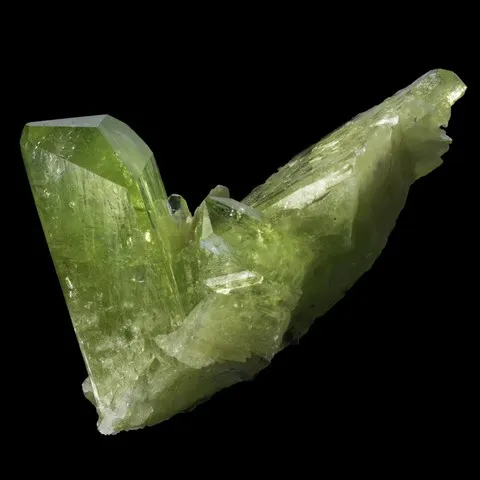BRAZILIANITE
Class : Phosphates, arsenates, vanadates
Subclass : Anhydrous phosphate
Crystal system : Monoclinic
Chemistry : NaAl3(PO4)2(OH)4
Rarity : Rare
Brazilianite is a mineral typical of granitic pegmatites, associated with muscovite, albite and tourmaline. It owes its name to its country of discovery : Brazil. Brazilianite occurs in short prismatic to isometric crystals, with striated or elongated prism faces, sometimes lanceolate, in flat crystals of octahedral appearance, also in fibroradiated globules. It is sometimes massive and porous. Transparent with a glassy luster, brazilianite is a characteristic greenish yellow, more rarely white or colorless. It is a rare mineral appreciated by collectors, which can be cut into gemstones.
Brazilinaite in the World
Brazilianite in France
In France, the only deposit to have produced brazilianite is Echassières (Allier), where it has been identified in microcrystals.
Twinning
No twinning known for this mineral species.
Fakes and scams
No fake inventories for this mineral species.
Hardness : 5.5
Density : 2.98
Fracture : Conchoidal
Streak : White
TP : Translucent to transparent
RI : 1.602 to 1.623
Birefringence : 0.020
Optical character : Biaxial +
Pleochroism : Weak
Fluorescence : None
Solubility : Hydrofluoric and sulfuric acid
Magnetism : None
Radioactivity : None


